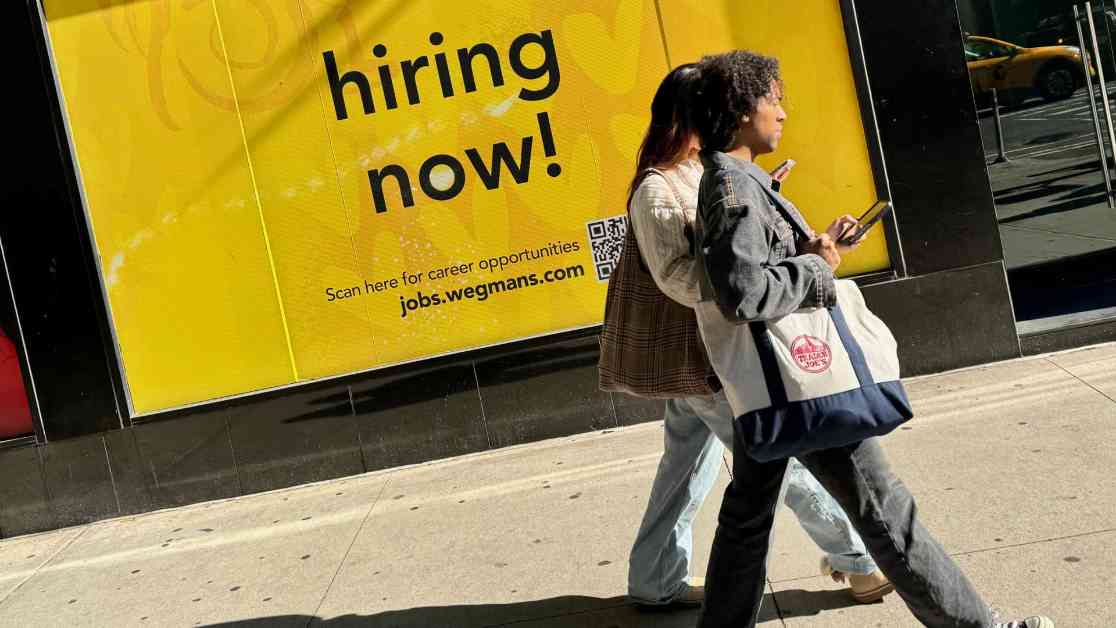US Economy Surges with 227,000 Jobs Added in November; Unemployment Rate at 4.2%
Job creation in November witnessed a substantial uptick with 227,000 new positions added, marking a stark recovery from the sluggish growth observed in October. This surge, reported by the Bureau of Labor Statistics, comes as a breath of fresh air following setbacks caused by labor strikes and severe storms in the Southeast.
Positive Job Growth Trends
Nonfarm payrolls soared to 227,000 in November, a significant improvement from the upwardly revised 36,000 in October. The positive momentum continued from September, where the payroll count was revised upwards to 255,000. Sectors such as health care, leisure and hospitality, and government emerged as key contributors to this job growth trend, reflecting consistent payroll expansion over recent years.
Retail trade, however, saw a decline of 28,000 jobs as the holiday season approached. The delayed Thanksgiving timeline may have influenced this downturn, leading some stores to delay hiring decisions.
Economic Implications and Federal Reserve Action
With the unemployment rate ticking up to 4.2%, in line with expectations, the Federal Reserve is expected to consider interest rate adjustments later this month. Ellen Zentner, chief economic strategist at Morgan Stanley Wealth Management, noted that while the economy continues to exhibit positive job and income gains, the uptick in the unemployment rate provides the necessary impetus for a potential rate cut in December.
Average hourly earnings witnessed a 0.4% increase from the previous month, surpassing expectations and maintaining a 4% growth on a 12-month basis. These figures, along with the overall job growth trend, have positioned the Federal Reserve to potentially lower interest rates, according to market experts.
Market Response and Analyst Insights
In response to the job report, stock market futures experienced an uptick, while Treasury yields trended lower. Market analysts, including Lindsay Rosner from Goldman Sachs Asset Management, emphasized the significance of the data in shaping future Federal Reserve decisions. Traders have shown a heightened anticipation for a quarter percentage point reduction in interest rates based on market-implied odds exceeding 88%.
Despite the positive job growth trends, concerns linger regarding the state of the labor market and its potential impact on future interest rate decisions. Policymakers, including Fed Chair Jerome Powell, have expressed optimism about the economy but remain vigilant in monitoring economic data for any signs of change.
Conclusion
As the US economy continues to showcase resilience and growth in the job market, the upcoming Federal Reserve meeting holds immense significance for market dynamics and economic stability. The latest job report paints a nuanced picture of progress and challenges, underscoring the delicate balance in navigating policy decisions amidst evolving economic conditions.
The human touch: Have you ever wondered how job market fluctuations impact individuals’ lives? Behind the statistical figures lie real stories of resilience, hope, and uncertainty. From healthcare workers securing employment to retail employees facing uncertainties during the holiday season, every job added or lost carries a ripple effect. As we delve into economic analyses and market predictions, let’s not forget the human faces behind the numbers, each with a unique tale to tell in the ever-evolving landscape of the job market.




















